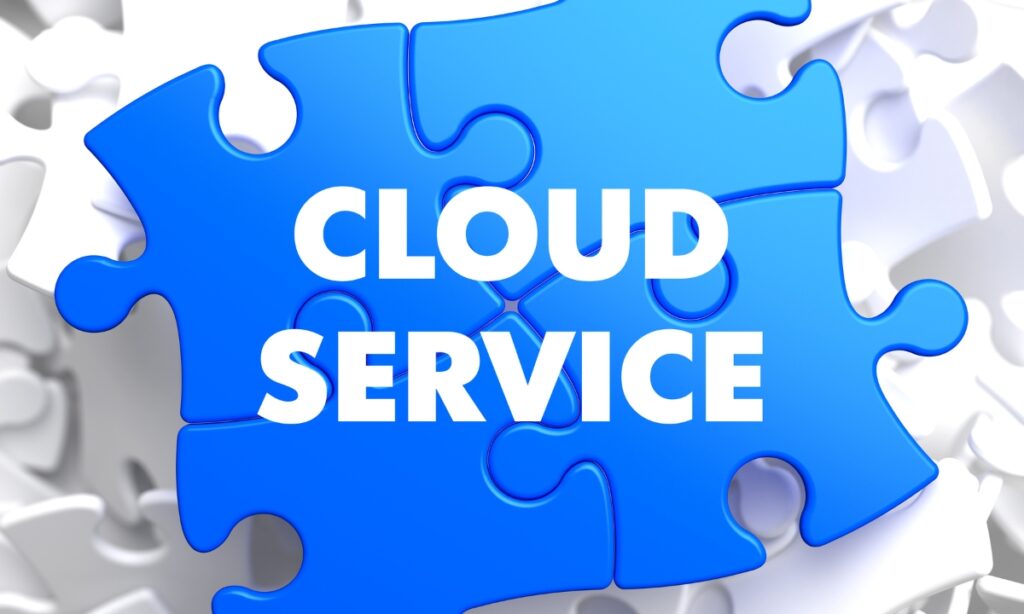Cloud cost optimization is vital for businesses seeking to maximize the value of their cloud investments. By effectively managing cloud costs, businesses can optimize spending and achieve better ROI.
Today we will explore the key strategies and best practices for cloud cost optimization. Understanding how to identify cost optimization opportunities and implement efficient spending strategies is crucial for businesses of all sizes.
By taking a proactive approach to cloud cost optimization, businesses can control expenses, eliminate wasteful spending, and ensure that their cloud investments align with their budgetary goals. Through effective cost monitoring, analysis, and optimization, businesses can optimize resource allocation and drive significant cost savings.
Join us as we slide into the realm of cloud cost optimization and discover practical tips and strategies for getting the most value from your cloud investment. By implementing these practices, businesses can achieve cost-efficient cloud operations and enhance their overall financial performance.

Understanding Cloud Costs
To effectively optimize cloud costs, businesses must have a clear understanding of the factors that contribute to cloud expenses. This understanding enables businesses to identify areas for cost optimization and make informed decisions.
Cloud costs can be categorized into various components, including compute resources, storage, data transfer, and additional services. By analyzing these components, businesses can gain insights into their cost drivers and identify opportunities for optimization.
One common optimization opportunity is right-sizing resources. Assessing resource utilization and eliminating waste can help businesses allocate resources efficiently and reduce unnecessary costs. Implementing auto-scaling strategies ensures resources are dynamically adjusted based on demand, optimizing cost-efficiency.
Choosing cost-effective cloud services is also essential. Evaluating pricing for cloud models, comparing service offerings, and negotiating contracts can result in significant cost savings without compromising performance or functionality.
By gaining a thorough understanding of cloud costs and exploring optimization opportunities, businesses can make informed decisions to maximize value from their cloud investments. In the next section, we will delve into strategies for right-sizing resources and optimizing cost-efficiency in cloud environments.
Right-Sizing Resources
One key strategy for cloud cost optimization is right-sizing resources, ensuring that resources are allocated appropriately based on actual usage and requirements. By optimizing resource allocation, businesses can avoid overprovisioning and reduce unnecessary costs.
Assessing resource utilization is crucial in determining the appropriate size and capacity needed for each resource. Analyzing metrics such as CPU usage, memory utilization, and network traffic helps identify underutilized or overutilized resources.
Eliminating waste is another aspect of right-sizing resources. This involves identifying and addressing idle or unused resources that continue to incur costs without delivering value.
Implementing auto-scaling strategies is vital for dynamic resource allocation. By automatically adjusting resources based on demand, businesses can optimize cost-efficiency while ensuring adequate performance during peak periods.
Regular monitoring and analysis of resource utilization help businesses identify opportunities for optimization and make data-driven decisions. This continuous optimization approach enables businesses to adapt resource allocation to changing needs and maintain cost-efficiency over time.
By right-sizing resources, businesses can effectively optimize cloud costs, align resource allocation with actual requirements, and achieve significant cost savings. In the next section, we will explore strategies for choosing cost-effective cloud services and optimizing spending.

Choosing Cost-Effective Cloud Services
Selecting the right cloud services is essential for cost optimization and maximizing value from cloud investments. Businesses should evaluate pricing models, service offerings, and features to make informed decisions that align with their budgetary goals.
Comparing pricing models helps businesses identify cost-effective options. It is important to consider factors such as pay-as-you-go, reserved instances, or spot instances to optimize costs based on usage patterns and workload requirements.
Evaluating service offerings is crucial to ensure that chosen services meet business needs without unnecessary expenses. Understanding the features and capabilities of different cloud services helps businesses select the most cost-effective solutions.
Negotiating contracts with managed IT and cloud service providers can lead to more favorable terms and discounts. Businesses should leverage their buying power and seek flexible agreements that align with their usage patterns and growth projections.
By choosing cost-effective outsourced IT and cloud services in the San Francisco Bay Area, businesses can optimize spending, reduce unnecessary costs, and achieve better ROI. Regular evaluation of cloud service providers and their offerings ensures ongoing cost optimization. In the next section, we will explore strategies for monitoring and analyzing costs to further optimize cloud spending.
Monitoring and Analyzing Costs
To optimize cloud spending, businesses must establish effective cost monitoring and analysis practices. By closely tracking and analyzing costs, businesses can identify areas for optimization and make data-driven decisions.
Implementing cost monitoring tools and dashboards provides real-time visibility into cloud expenses. These tools enable businesses to track spending, identify cost trends, and gain insights into resource utilization.
Analyzing cost patterns helps businesses identify cost optimization opportunities. By understanding cost drivers and usage patterns, businesses can adjust resource allocation, identify areas of waste, and make informed decisions to optimize spending.
Optimizing costs involves continuous monitoring and analysis. Regularly reviewing cost reports, analyzing cost patterns, and evaluating cost optimization strategies ensure ongoing efficiency and cost savings.
By establishing robust cost monitoring and analysis practices, businesses can proactively identify and address cost inefficiencies, optimize resource utilization, and maximize the value of their cloud investments. In the next section, we will explore strategies for optimizing storage and data management to further enhance cost efficiency.

Optimizing Storage and Data Management
Efficient storage and data management are essential for cloud cost optimization. Businesses can leverage various strategies to optimize storage usage and reduce costs.
Managing storage effectively involves assessing data storage requirements and implementing data lifecycle management practices. By classifying data based on its importance and access frequency, businesses can allocate storage resources accordingly and reduce unnecessary costs.
Implementing data compression and deduplication techniques helps optimize storage utilization and minimize data storage costs. These techniques reduce the storage footprint by eliminating duplicate data and compressing files, resulting in cost savings.
Archiving infrequently accessed data to lower-cost storage tiers can also yield significant cost reductions. By moving less critical data to lower-cost storage options, businesses can optimize costs while maintaining accessibility as needed.
Regularly reviewing and optimizing data storage configurations ensures that businesses are not overpaying for storage resources. Evaluating storage performance, capacity requirements, and storage allocation policies enables businesses to make adjustments as needed.
By optimizing storage and data management, businesses can reduce costs, improve storage efficiency, and achieve better cloud cost optimization. In the next section, we will explore the benefits of leveraging reserved instances and savings plans to further optimize costs.
Leveraging Reserved Instances and Savings Plans
To further optimize cloud costs, businesses can take advantage of reserved instances and savings plans offered by cloud service providers.
Reserved instances allow businesses to commit to using specific resources for a set period, often resulting in substantial cost savings compared to on-demand pricing. By reserving instances, businesses can benefit from discounted rates and long-term cost predictability.
Savings plans offer flexibility by providing discounted pricing for a specific usage commitment, rather than reserving specific instances. This allows businesses to achieve cost savings while maintaining the flexibility to allocate resources as needed within the committed usage framework.
By strategically leveraging reserved instances and savings plans, businesses can optimize costs for predictable workloads and achieve significant savings over time.
Regularly evaluating usage patterns and adjusting reservations and savings plans accordingly ensures ongoing cost optimization. Monitoring tools provided by cloud service providers enable businesses to track usage against commitments and make necessary adjustments.
By utilizing reserved instances and savings plans, businesses can optimize their cloud costs, achieve better financial predictability, and maximize the value of their cloud investments. In the next section, we will explore strategies for rightsizing database services to further optimize costs and performance.

Rightsizing Database Services
Rightsizing database services is crucial for optimizing both costs and performance in the cloud. Businesses can adopt strategies to ensure that their database resources align with their actual needs.
Assessing database usage and performance helps identify overprovisioned or underutilized resources. By analyzing metrics such as CPU utilization, memory usage, and storage requirements, businesses can rightsize their database instances and reduce unnecessary costs.
Choosing the appropriate database service is essential. Different database services offer varying pricing models and performance characteristics. Selecting the right service based on workload requirements and cost considerations ensures optimal resource allocation.
Adjusting database capacity as needed is another optimization strategy. By dynamically scaling up or down based on workload demands, businesses can optimize costs and ensure efficient resource utilization.
Regularly monitoring and optimizing database configurations and indexes helps improve performance and reduce costs. Tuning queries, optimizing schema designs, and implementing caching mechanisms are effective ways to enhance database efficiency.
By rightsizing database services, businesses can achieve optimal cost-efficiency and performance in their cloud environments. In the next section, we will explore the importance of implementing cost awareness and governance practices for successful cloud cost optimization.
Implementing Cost Awareness and Governance
To ensure successful cloud cost optimization, businesses need to establish cost awareness and governance practices. These practices help maintain cost control and accountability throughout the organization.
Educating stakeholders on the cost implications of cloud services fosters a culture of cost-consciousness. By increasing awareness, businesses can promote responsible cloud resource usage and decision-making.
Establishing governance policies and guidelines helps enforce cost optimization practices. Setting clear guidelines on budget allocations, resource provisioning, and usage restrictions ensures that cloud resources are used efficiently.
Regular monitoring and reporting of cloud costs enable businesses to track spending and identify cost-saving opportunities. Cost visibility empowers businesses to make informed decisions and take timely actions to optimize spending.
Implementing automated cost management tools and alerts helps identify cost anomalies and prevent overspending. These tools provide real-time insights into cost trends and enable proactive cost optimization.
By implementing cost awareness and governance practices, businesses can maintain cost control, optimize spending, and maximize the value derived from their cloud investments. In the next section, we will conclude the blog by summarizing the key takeaways and emphasizing the benefits of cloud cost optimization.

Why You Should Be Focusing On Cost Optimization
Cloud cost optimization is essential for businesses seeking to maximize the value of their cloud investments. By implementing strategies such as right-sizing resources, choosing cost-effective services, monitoring costs, and implementing governance practices, businesses can achieve significant cost savings and optimize their cloud spending.
Effective cost optimization not only leads to financial benefits but also enhances overall operational efficiency and performance. Businesses can allocate resources more efficiently, scale their operations as needed, and make data-driven decisions based on cost insights.
By prioritizing cost awareness and governance, businesses can foster a culture of cost-consciousness and accountability throughout their organization. Regular monitoring, analysis, and adjustment of cloud costs ensure ongoing optimization and continuous improvement.
Embracing cloud cost optimization practices enables businesses to extract maximum value from their cloud investments and stay ahead in a competitive landscape. By leveraging the power of cost optimization, businesses can optimize their cloud spending, drive better ROI, and allocate resources strategically to fuel growth and innovation. If you would like to learn more we encourage you to schedule a free consultation or give 911 PC Help a call today at 415-800-1130!
